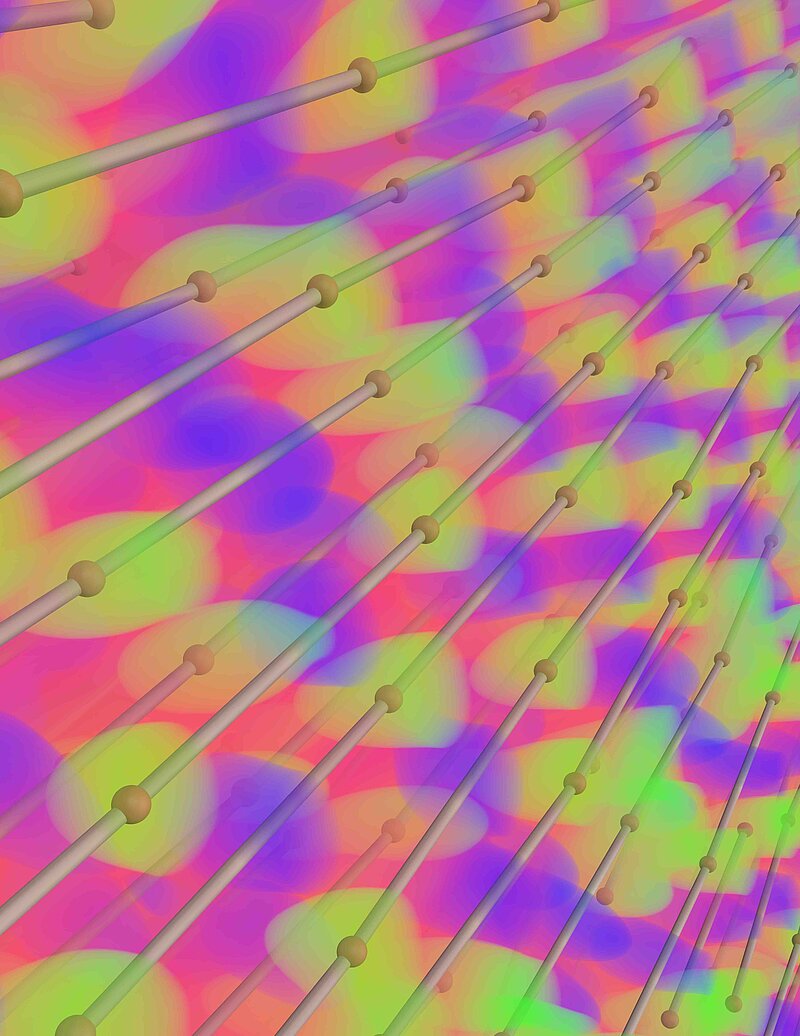Muscles are remarkable in their ability to generate force and enable movement. Sarcomeres, the contractile units of muscles, form chains through millimeter-long myofibrils that connect to the skeleton. During development, new sarcomeres are added on to myofibrils under high mechanical tension, but exactly how these micrometer-sized units are incorporated has remained unknown. Researchers from the group of Professor Benjamin Friedrich at the Cluster of Excellence Physics of Life (PoL), have revealed through a novel publication in Science Advances how new sarcomeres are added to these myofibrils, while maintaining constant tension.
"All animals possess striated muscle, which enable their voluntary movements" explains Ian David Estabrook, a former postdoctoral researcher at PoL who contributed to the study. "But despite their physiological importance, the mechanisms through which muscles spontaneously self-assemble during myofibrillogenesis remained unclear”. To complicate the process further, muscles are naturally under constant mechanical tension, even during the early stages of their formation, with loss of this tension potentially causing irreparable damage, like rupture.
Through a collaborative effort between the theory group of Benjamin Friedrich at PoL, and the experimental lab of Frank Schnorrer at Marseille Developmental Biology Institute, the researchers investigated sarcomeres in Drosophila (fruit flies) during muscle development. Through an innovative, physics-inspired image analysis pipeline, the authors were able to accurately tracesarcomeres from multi-channel 3D fluorescence microscopy data. This enabled the identification of rare division events, similar to finding a ‘needle in a haystack’. "Our detection pipeline was capable of tracking over ten thousand sarcomeres" adds Estabrook. "We were able to identify rare, atypical sarcomeres which differed significantly in their protein patterns and sizes”.
This subsequently led to a novel mechanism of muscle growth being identified. According to Prof. Benjamin Friedrich, co-corresponding author of the study: “We identified and confirmed a mechanism of tension-driven addition by which a mother sarcomere divides into two daughter sarcomeres. We could quantitatively show how new sarcomeric proteins are recruited during the division process”. Contrasting the current standard ‘end hypothesis’, which proposes that sarcomeres are added exclusively at the terminal ends of myofibrils, the authors demonstrate that sarcomere addition occurs throughout the length of the myofibrils. A similar mechanism prevails in cross-striated larval muscle in the flies, which shares greater similarities with human skeletal muscle. In these muscles, the division site spreads along the width of the myofibril bundles in a ‘zipper-like’ mechanism, which may also apply in the muscle development of mammals.
This interdisciplinary study highlights the power of combining advanced theoretical tools like image analysis algorithms and experimental observations from microscopy. The findings represent an important step forward in understanding fundamental principles of muscle development and has implications for medicine and the study of muscle-related diseases.
___________________
Original Publication
Clement Rodier, Ian D. Estabrook, Eunice HoYee Chan, Gavin Rice, Vincent Loreau, Stefan Raunser, Dirk Görlich, Benjamin M. Friedrich*, and Frank Schnorrer*: Muscle growth by sarcomere divisions. Science Advances (July 2025)
Link: www.science.org/doi/10.1126/sciadv.adw9445
*co-corresponding authors
